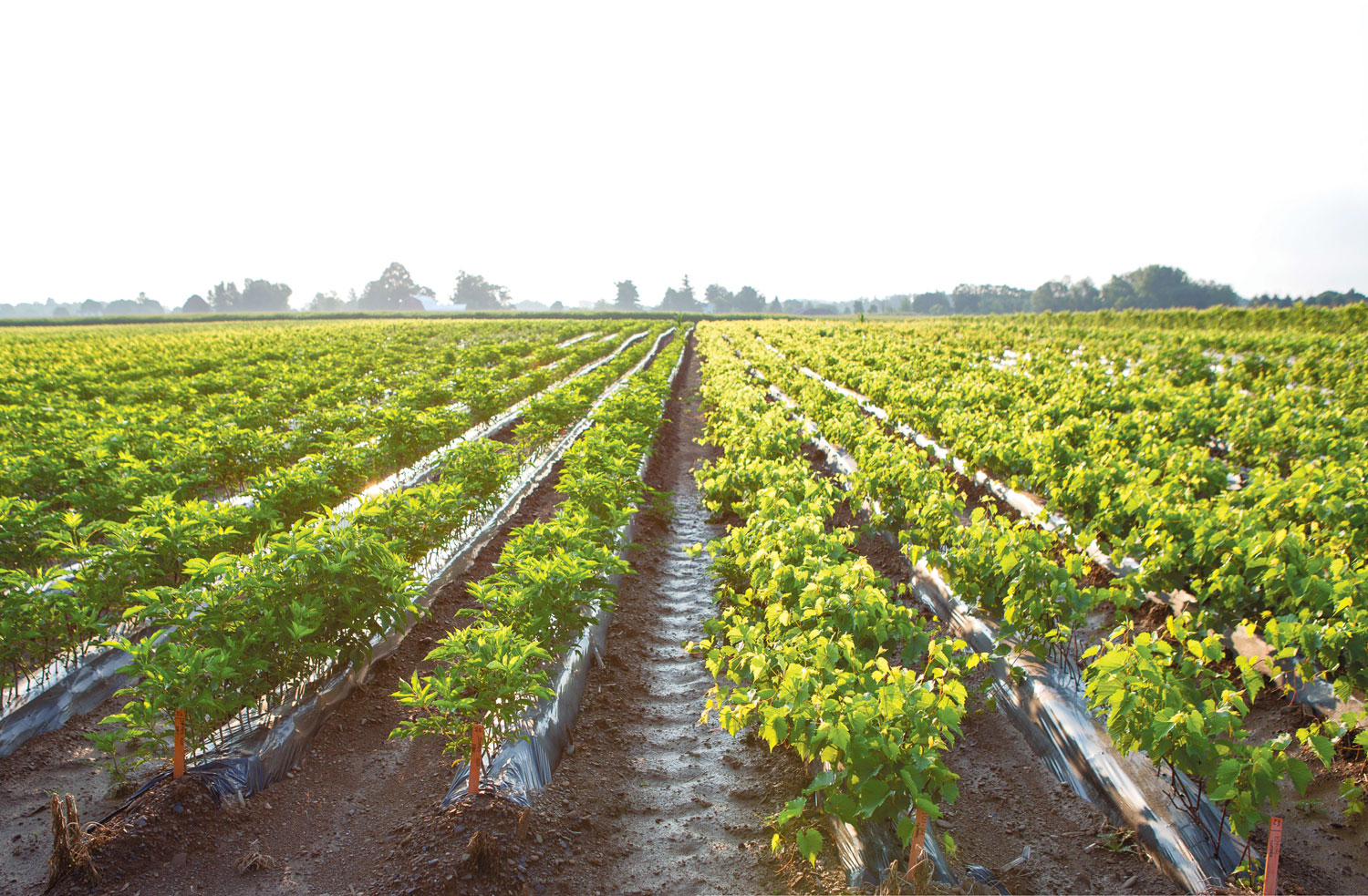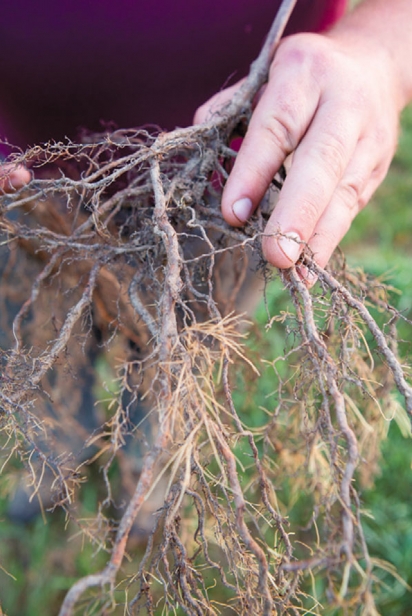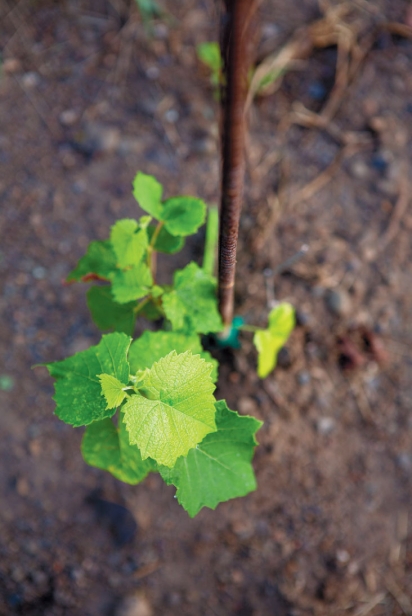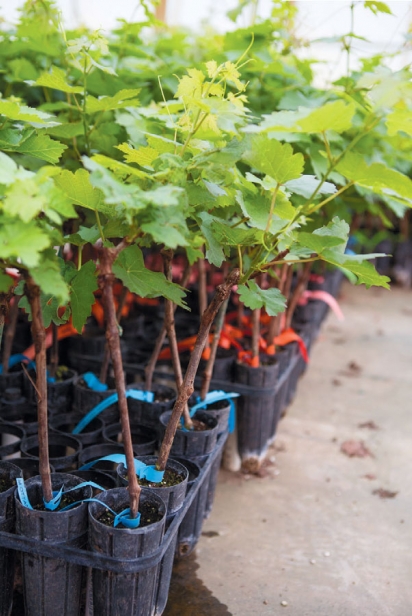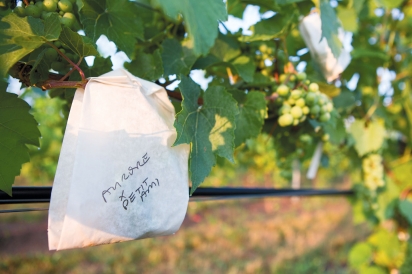Double A Vineyards
Grape industry innovator
Located within a few miles of the Lake Erie shoreline near Fredonia, NY, sits one of the country’s most sizable grapevine nurseries—the largest outside of California.
Dennis Rak, the head of this family-owned nursery, grew up on a small farm in the area, with four or five acres of grapes and two to three acres of apples. His family sold produce from a roadside stand and collected eggs from their 10,000 chickens. Rak considered becoming an apple farmer, but after graduating from Cornell University, he took a job at a local winery as their vineyard manager. He later worked for Agway as a field sales representative and then for a local nursery, managing its greenhouse production and field growing operations.
In 1990, Dennis and his wife, Susan, purchased a foreclosed property in Fredonia, through the Farmers Home Administration program. The 165 acres that would become Double A Vineyards included a house and barn and was mostly abandoned vineyards. The property didn’t go to the highest bidder (the price was fixed), but instead was awarded on a business plan. With the grape industry distressed, Rak’s plan included removal of the abandoned vines, to selectively bring back some of the vineyards and grow nursery stock.
In its first year, Double A Vineyards sold 100,000 cuttings of four or five varietals to 12 customers, including a few mail-order companies and a handful of growers. At its current 1,200 acres, the business handles nearly five million plants annually (the majority are some 150 varietals of grapevines, as well as raspberries, blackberries, elderberries, rhubarb, goji berries, blueberries, willow and hops, among others), and sons Adam Alexander and Abram Andrew, the namesakes, are fully involved. Customers include growers, wineries, mail-order companies and distributors that repackage their vines for big-box retail, as well as homeowners wanting a few vines in the backyard garden. The 150 varietals range from vinifera to winter-hardy hybrid varieties and are shipped throughout most of the U.S.
The factors that make this region great for growing grapes also make it a great nursery location: “It’s cold but not that cold, and with the right management, many different varieties can be grown,” explains Rak. “The region has really good gravel soil, it’s fertile and well-drained. The lake creates a microclimate: In the spring the lake is cold, so the immediate lakeshore stays cold and delays bud break to get past the threat of frost. In the fall, the lake is warm, so it keeps the area a little warmer and extends the season.”
The process of growing nursery stock takes more than a year. Cuttings are buried upside down underground for the winter where the base of the cutting will callus over and create a base for the root system. They are dug up and planted in the spring, where they grow for one full season. In late fall, they are taken out of the ground and brought into a cold storage facility, which keeps the vines dormant. They are then sorted, graded, tagged, bundled and stored until shipping season (mid-March through May).
The Raks continually look for opportunities to improve processes. Innovative and entrepreneurial, they have expanded their offerings, incorporated state-of-the-art technology and advances in farming, and worked with breeders and developmental programs to improve hybrid varieties, productivity, and the health of vineyard stock.
One of the largest challenges for the business is a shortage of labor, which has forced them to mechanize aspects of the process. Cuttings are made and planted by hand. With difficulty hiring the number of people needed, the Raks hope to make 25 percent of cuttings this year with specially designed equipment, plus more in the future, resulting in more uniformity and higher quality.
Viruses can negatively impact yield, quality and lifespan of a vineyard. The desire to provide the highest quality materials to their customers led Rak to the National Clean Plant Network (NCPN), which was established in 2008 to protect U.S. specialty crops (grapes, fruit trees, citrus, berries and more) from pests and diseases that spread and cause economic harm.
The New York State Department of Agriculture and Markets has been working with NCPN to revive its grapevine certification program, which was inactive since the early 1990s. Independent virus testing ensures that these materials are clean (virus-free) and certification programs limit the presence of viruses in propagation material, reducing the spread of disease and lowering the risk of production and quality losses. Double A has invested heavily in this long-term project and has worked with NCPN and New York State to establish a virus-free certified block, and 2018 will see the first large-scale harvest from this next generation of clean plant stock.
Double A is also involved in the development of varietals suitable to various growing conditions. With a surplus of Concord and less demand for Niagara, Double A is working with partners to develop new and improved varieties, particularly for this region. One specific example is that local growers would like to be able to grow a substitute for grapes that are currently purchased from California for white grape juice. After asking various breeders around the country if they had any varieties that would meet the necessary criteria (high sugar, ripen early, good disease resistance, good winter hardiness), Rak found that no one was breeding specifically for those qualities. Double A is currently working with a breeder to develop a grape with those distinct attributes.
Double A is also focused on customer service and education. Once a purchase is made and the one-year-old field-grown bare root dormant vines are planted, it takes three to four years to see a full crop load. A large part of the business is not only helping the customer choose the right varietal for their location by providing information on what, when and how to plant, but also how to maintain and care for the plants. Double A has a viticulturist on staff that can answer questions, as well as a website that includes a plant diagnostics tool and growers’ guide.
“The better farmers our customers are, the more successful we’re going to be,” says Rak. “We give them our babies and we want to help them raise them right.”
As Rak pointed out, Ephraim Bull bred the Concord grape in 1843. And while he did a really good job and the variety is still widely in production today (which can’t be said for many apple, cherry or other annual crops that existed in 1843), there is always room for improvement. Rak sees a lot of potential in developmental programs. “In all of agriculture, improved varieties are important in helping us to remain sustainable.”
> Double A Vineyards: 10277 Christy Rd, Fredonia, NY; 716-672-8493


